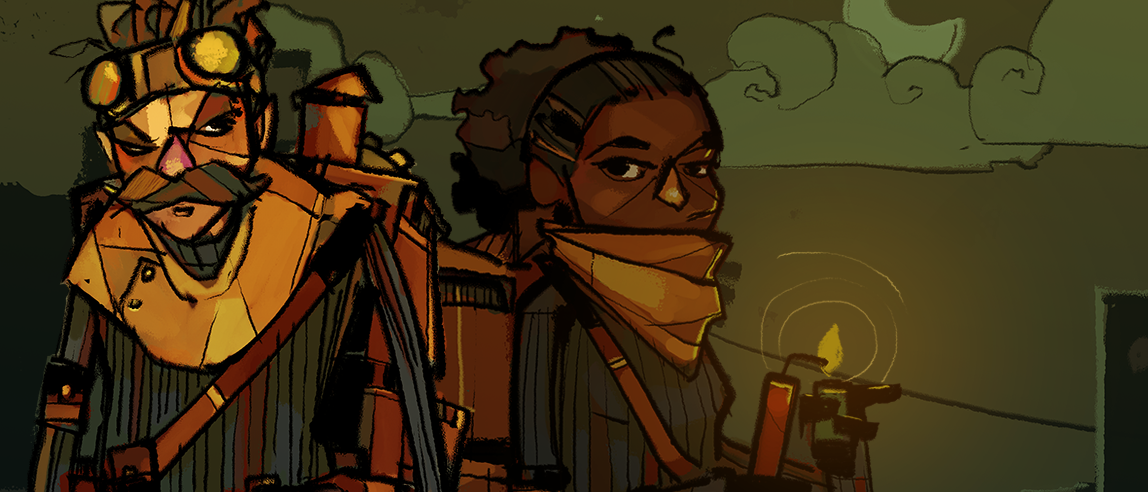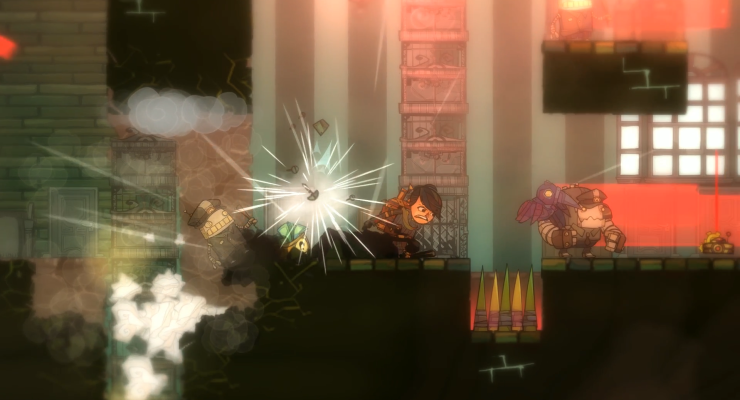If you have ever thought you were a patient person, The Swindle is here to bring you down to earth. No, there are no glitches or freezes it’s all about tension. Take just one wrong step, and suddenly your thief is belly-up surrounded by the cash they worked so hard to steal. Unfortunately, much of the difficulty in The Swindle is artificial, throwing more enemies and obstacles your way as you move through each district. Adding to the difficulty, you only have 100 days to complete the entire game; even tiny slip-ups result in severe setbacks.
The premise of the Swindle is based around thievery. Unless five-finger discounts are considered heroic, The Swindle changes up the formula a bit by having players control thieves (and not the Robin Hood-types, either). Your goal is to swipe as much moolah as possible as you work your way to the ultimate heist, a top-notch security system known as “The Devil’s Basilisk”. If the Basilisk isn’t filched by then, it will power on, and our rouges can kiss their careers goodbye.
Combat in The Swindle is standard as most stealth titles go. Being burglars, self-defense is not number one on their priority list. While most enemies go down with one smack, so does your thief. Even a fall greater than ten feet will result in the end of your thieving days over a shower of money you swiped. This would not be so much of a problem if The Swindle offered any long-range skills outside of hacking drones. It’s understandable that long-range attacks could unfairly swing the odds in the players’ favor, but even a one-shot pistol is preferable to nothing; especially since your foes are armed with mini guns.
Random level generation makes it difficult to prioritize which upgrades you should purchase. There are obstacles that appear which require a triple jump, only to never be seen again. Levels may be randomly-generated, but they all share one thing in common, shallow hallways and rooms with low ceilings. Coupled with the increasing number of obstacles and foes, many areas can feel like standing room only. If you don’t plan out your attack ahead of time, your plundering days will end before they can begin.
Since enemies both outnumber and outgun our bandit, the margin-of-error is near zero. Death not only forfeits the money you acquired during the heist, you also lose a valuable 24 hours of thieving. The moment you are spotted, alarm bells sound, and you only have seconds to cheese-it back to the escape pod, before you are surrounded by police. If you didn’t grab the money before being spotted, you’ve lost yet another day.
To gain access to higher-profile targets, players will need to pay out an increasing amount of money for security clearance. Early districts already set a high difficulty bar for the game, and later heists only ramp up the bar that much more, but the difficulty is less of a test of your skill and more of a test of patience. Each district becomes filled with an increasing number of enemies, cameras, and mines, leading to waiting almost minutes at a time just for the opportunity to break into a single room.
The difficulty only piles higher once you reach the final heist, aptly named, “The Swindle”, which costs an egregious £400,000. Each time you fail the final mission (and you will likely fail your first time), you’ll need to dole out another £400,000 to try again. The act of paying for each attempt only adds to the already high benchmark made by the developers, making failure that much more frustrating, especially since you don’t have any time to waste. If you’ve died more than fifteen times in a campaign, you may want to think about packing up your burglars tools and taking it from the top.
Pass or fail, each heist costs 24 hours. You can delay the countdown by 48 hours, but it will cost you; this amount will also increase after each use. Once your 100 days are up, so is your campaign, and you will have to start from a new game. Since each campaign lasts several hours, watching the Basilisk boot up may be enough for some players to close the game for good.
To stand a chance at stealing the Basilisk, players will need to upgrade their thieves, and outfit them with gadgets to get them through droves of security drones, mines and security robots. A few skills start out at a reasonable price, but the majority of skills will only be available after a couple of in-game weeks of heists. Unfortunately, not all skills are created equal, and astute players will quickly find the dominant strategy for victory: the bug your team of rogues can attach to computers. Not only will bugs directly deposit money into your account (destroying the risk-reward system), but these bugs’ doings will carry on through future heists. On the one hand, these bugs seem to game the system, but on the other, they are really the only reliable method of getting to the final heist.
The Swindle has a lot going for it. You are a thief, but there are no lessons to learn, or deep meaning; you’re in it for the loot. Maybe it’s not a good lesson to put on PBS, but I can dig it. What I can’t get behind is the unforgiving difficulty. Death comes so swift and mercilessly, and each casualty only digs a deeper pit for players trying to reach the final target in time. After all, once that timer ticks to zero, you’ll have to start all over again from scratch. So while you may be trying to rob citizens of their money, failing to steal the Basilisk will rob you several hours of your time. People can argue that all of these mechanics add to the tension of each heist, but when the stakes become too high to create a satisfying payoff, all players are left with is frustration.
PN Review: The Swindle
A solid stealth title, but it’s unforgiving difficulty is what holds me back from giving it a higher score. Failing to steal the Basilisk results in losing your save, which may frustrate a great many. Otherwise, if you are looking for a challenge, look no further.







